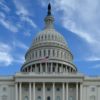On November 7, the Denver Public Schools (DPS) Superintendent will announce a list of schools to be closed for the 2025-26 school year. During the next nine days, the school board and the Superintendent will meet with affected school communities to provide “counseling and care” as they explain how the closures will affect them. On November 21, the school board will vote on the Superintendent’s recommendations to close the named schools.
Since Sept. 24, DPS held six general “community” meetings to explain the rationale and the process for closing schools. At the school board meeting on October 28, Superintendent Alex Marrero summarized the feedback from the community meetings. He highlighted “transparency” as the top theme heard from the public. He stated the public asked for “clearer data around closure decisions, enrollment, and financials.” This lack of transparency has been evident throughout the school closure policy development by the board, during the district-led community meetings, and through feedback from many sources.
Transparency involves openness, honesty, and accountability in all communications. While district staff presented slides and posters on their web site and in the nearly identical six community meetings, the information came off as a pre-planned sales pitch to many participants. The district didn’t disclose the final methodology of how they would close schools until Oct. 28, four weeks after the first community meeting.
Discussions at the board level were also not fully transparent as changes were made to the original school closure guidelines at an August 15 meeting after the Superintendent sent a “confidential memo” to the board. There is no information on what that memo contained. Yet, because of the memo, the board decided to change the timeline for disclosing the schools to be closed, pushing it back a month, and deleting the guideline for including equity as a criterion for closing schools.
DCTA leadership expressed their frustrations with “the district’s flawed community engagement process” emphasizing it lacked “authenticity.” In a letter to their members on November 1, DCTA also communicated disappointment “that meaningful discussions about continuity for students, job placements, and resources for displaced families have yet to take place.”
DCTA wasn’t the only group that has come forward with transparency concerns. On October 31, the Latine Education Advisory Council (LEAC) sent a letter to the school board and district staff asking DPS to take six additional action steps before moving forward on closing schools. The LEAC letter stated the “community deserves transparent and clear data from multiple sources around the drivers of declining enrollment and the financial implications it has on schools and community.” The group also asked the district to develop a “comprehensive study regarding the impacts of school closures on marginalized communities.”
Movimiento Poder, a grassroots organization led by working-class Latino immigrants, documented several concerns regarding the school closure process. They criticized DPS’ “severe lack of transparency,” stating that DPS hasn’t provided “any credible evidence that teaching and learning will be improved by school closures. They have vaguely referenced that closures are needed because of fiscal challenges, but they haven’t provided any information on how closing schools would address such challenges.” At a news conference on October 21, Elizabeth Burciago, a community organizer with the group, stated, “These decisions are being made without the community really knowing what’s happening.”
At the board meeting on Oct. 28, Marrero said that they have run out of federal ESSER money, and therefore, they cannot continue to supplement lower enrollment schools with the necessary resources they need. Throughout the community meetings and in board meeting discussions, however, there was no comprehensive cost analysis or fiscal study explaining how the proposed closure/consolidation process will save money. Instead, the district staff provided detailed explanations of how larger enrolled schools can provide a full complement of resources and services to students. There was no discussion of alternatives to secure the resources to support all schools. There was no explanation of how this consolidation would work by combining two totally different communities and minimal reference to employee needs.
Closing schools does not necessarily save money for school districts. The DPS bond committee included nearly $12 million in the upcoming bond issue to cover the cost of “expenses related to school closure and consolidation.” This potential bond money isn’t referenced on the closing schools’ section of the website. While this $12 million may address some potential closure needs, Jefferson County spent more than $45 million on upgrades to schools taking in students from the 16 elementary schools that closed at the end of last school year.
At the same time DPS is planning to close an unknown number of schools, they are asking Denver voters to approve a $975 million bond issue. When asked by Channel 7 news what will happen to those schools scheduled to receive improvements if they end up being on the closing list, Scott Pribble, DPS communications director stated, “improvements to closed buildings will still be made since the district doesn’t plan on selling them.” He also said that they could use the bond money wherever it was needed.
There are other examples of this “transparency gap” in the DPS’ school closure process. During the community meetings, DPS staff often shared misleading or incomplete data. As an example, one of the slides showed a graph stating that lower enrolled schools have a “64% higher cost, on average, to educate students at schools with fewer students.” They described this as a “resource disparity” in which the “average per student funding for schools with 0-215 enrollment was $16,724, and for all other schools they listed $10,207” as the average amount.
However, a document received from the enrollment director shows that the schools designated as part of the “lower enrolled group of 13 schools” included several schools with unusually high per pupil costs. Robert F. Smith Academy and the Denver School of Sustainable Design were grouped with nine neighborhood schools, and the per pupil allocations for their schools were $61,507 and $27,071 respectively. In addition, that same slide stated, in very small print, that the enrollment information does not refer to “ECE students, center or pathways schools, or reserve funding.”
The district staff presented another slide with research citations indicating that enrolment is declining across the country, explaining that this challenge is not unique to DPS. At the Oct. 28 meeting, the enrollment director stressed that “lower birth rates” are the primary reason for these declines. Yet the research cited on the district slide, which was not discussed, only listed, emphasized another significant factor: the growth of charter schools nationally.
One of the research citations listed “public school” enrollment as declining nationally, but DPS staff left out the data for “charter school enrollment” from the same citation. The charter school enrollment data reported that “Between school years 2010–11 and 2021–22, the number of public charter schools in the United States increased from approximately 5,300 to 7,800. Meanwhile, the number of traditional public schools decreased from 93,500 to 91,400. Three of the other listed citations also cited the impacts of charter school increases on district enrollments. “The promotion of charter schools through the “school choice system” in urban areas like DPS often occurred by falsely labeling many public schools as failures, and helped to create this national scenario.
David Arsen, professor at Michigan State University, documented that “school choice policies powerfully exacerbate the financial pressures of declining-enrollment districts, particularly those with sustained high levels of charter school penetration.” His research found that the “adverse impact on district finances increases progressively as the charter threshold increases from 5% to 25% of resident students.”
Last year, before San Antonio closed 15% of its schools for “academic and financial sustainability,” Professor Terence Green, an education researcher at the University of Texas at Austin, said, “charter schools…. could siphon off more students in the wake of closures… I feel confident from my qualitative data for the people who are in the neighborhoods and communities, that those charter schools are salivating at the opportunity.”
Along with their call for a change in how DPS funds schools, DCTA reminded their members about the impact that charter schools have had on enrollment. Their letter stated, “The school choice system created by Denver Public Schools over the last decade has led to the rapid expansion of charter schools, diverting students and crucial resources from neighborhood public schools that need them most. Without a sustainable, long-term vision, our public education system has become overextended, leaving underserved communities to suffer.”
DPS has seen a significant increase in charter schools “as it has closed or replaced 48 schools and opened more than 70, the majority of them charters.” Today almost 22,000 students are in charter schools representing nearly 1/4 of the district’s population. However, none of these charter schools are involved in the school closure discussion. The district website states “they are not permitted by law to identify charter schools with low enrollment and close them for that reason alone.” Ironically, on Nov. 7, when the community learns the names of district schools to be closed, the school board will vote on renewals of charter schools.
Community members unsatisfied with transparency
Many people attending the community meetings left unsatisfied, and the lack of transparency was a paramount reason. A cursory analysis of the comments from the community meetings validates this reaction across the community. Parents have continued to voice their concerns related to this issue. Palmer parent Diana Hessel told Channel 7 news that she felt “the whole process seems disingenuous.” Najah Abu Serryeh, a former Fairview parent, whose school was closed last year, said going to a “new school has been a difficult adjustment.”
Chalkbeat reported that enrollment is up across the district and many schools are overcrowded. While some schools are under enrolled, student numbers are over the projections in several schools. Josie Facio told Denverite that “school closures will only exacerbate problems at overpopulated schools.”
Several parents have “argued DPS could instead rebalance enrollment through a redrawing of district boundaries, allowing families to apply to attend other public schools within their district.”
According to board docs from April 10, 2023, the original idea of the EL-18 guidelines for closing schools was discussed along with a policy to change enrollment boundaries. That policy included language which stated:
“As Denver continues to grow and housing prices increase, our diverse neighborhoods are struggling to balance the challenges of gentrification with their rich cultural histories. Many parts of Denver are undergoing major shifts in demographics, resulting in significant changes in housing patterns and a major reduction in many neighborhoods of school-aged children… However, the district must focus on strategies within its locus of control while advocating for strategies that may require additional stakeholders or resources.”
This policy, titled EL-19, called for “Developing enrollment boundaries (neighborhood boundaries) and enrollment zones that account for shifting demographics and housing trends.” Although EL-19 was introduced last year, it has been shelved by the current board.
West Senior Kyree Romo told Chalkbeat last May that “outdated district boundaries result in less students, less teachers, less classes. This directly impacts students and equitable access to the opportunities that we deserve.” The West High students asked the district to reevaluate the district’s boundaries. DPS hasn’t completed a districtwide reevaluation of school boundaries in decades. “The same recommendation was included in a recent report commissioned by Denver Public Schools called the La Raza Report.”
Last week, in an interview with Denverite, Board President Olson stated that they couldn’t do boundary changes because it would “involve too many transportation challenges.”
The district seems committed to the “school choice” system. “For more than a decade, DPS has encouraged, and in some areas mandated, families to choose any school in their neighborhood or the entire district.” DPS says that families in closed schools will have the opportunity to attend any district, charter, or their newly consolidated school.
The two regions experiencing the highest declining enrollment are northwest and southwest Denver where almost half the charter schools are currently located. Chalkbeat reported that “critics of school choice also believe it has created a cycle where schools that have declining enrollment — whether it’s due to academic issues, gentrification, or demographic changes — have a tougher time attracting students and recovering. …It’s hard for a school to attract more students when families and students notice that it has few resources.”
Another transparency issue is the current relationship of the school board with their newly hired consultant, Ben Kleban. Since January, DPS board members and the Superintendent have been working privately with an outside consultant who provides advice on school board policies. Yet the public knows very little about this arrangement.
Kleban works for School Board Partners, “an organization that spun out of Education Cities…which focused on expanding charter schools as well as giving district schools more autonomy.” He was officially hired in June, but he has been advising and coaching board members since their retreat last January. He was directly involved in the development of the guidelines for closing schools.
CORA-requested documents indicate he shares information about school closures occurring across the country and gives advice on the DPS plans to close schools. He gave information about Seattle’s announced plans to close 21 schools, though the community pushback helped the Seattle board rethink their plans, and they reduced that number significantly. As a former charter school founder and school board member on the all-charter New Orleans school board, Kleban’s experiences and philosophy may be impacting the decisions of the current board.
What comes next for DPS families?
A lack of transparency can erode trust, engender anxiety, and create doubt regarding an organization’s actions. This transparency gap regarding the planned DPS closures affects many sectors in the Denver community, and it should influence the Superintendent’s and the school board’s actions.
In asking for “clearer data around closure decisions, enrollment, and financials,” parents and community groups want to know more about why DPS insists on closing schools when enrollment is increasing. They don’t see evidence of the fiscal impacts for individual schools or the overall district. They want to know how these decisions will help marginalized communities when the research indicates families suffer significant harm when their schools are closed. They feel like they are being told what needs to happen, rather than being asked what is best for their local school community.
Citizens have proposed alternative ideas to address declining enrollment such as changing enrollment boundaries and/or funding schools differently. The issue of school choice and charter schools remains in the background. The public is unsure if and how DPS will address the multitude of issues in this transparency gap as they deliberate the closure plans.





